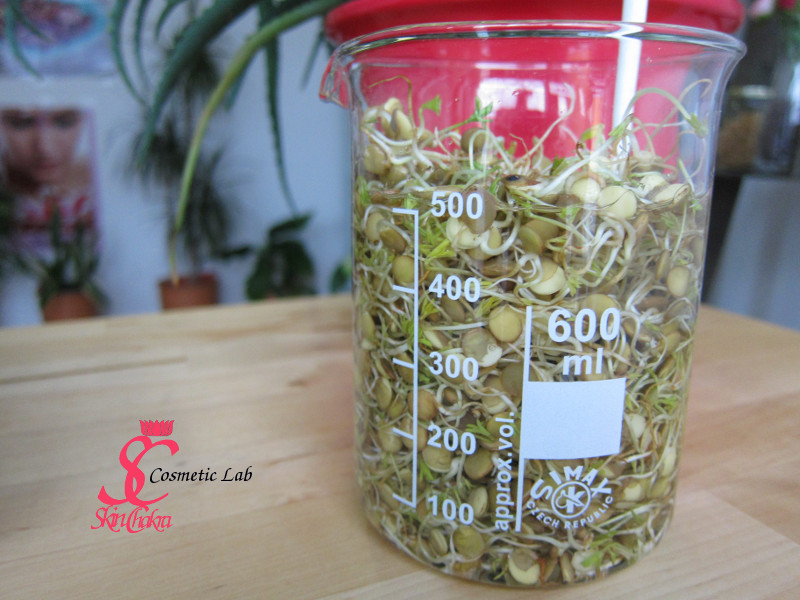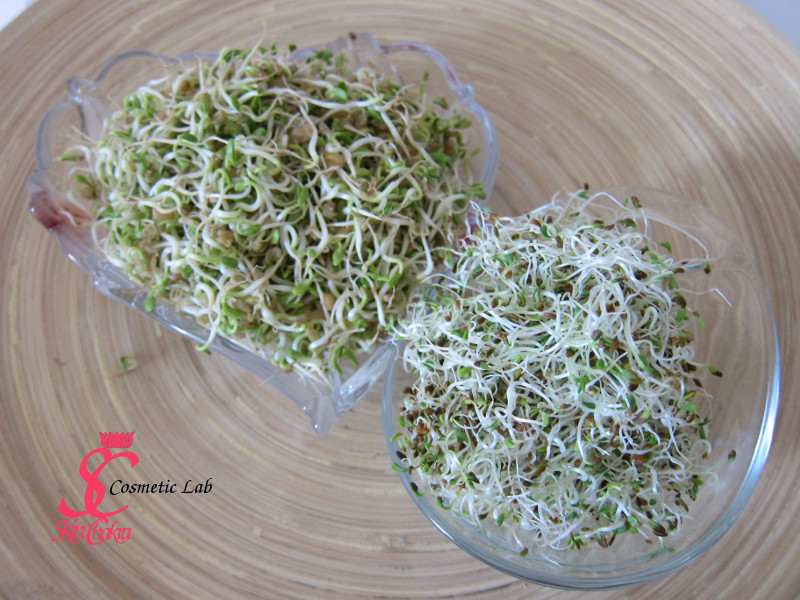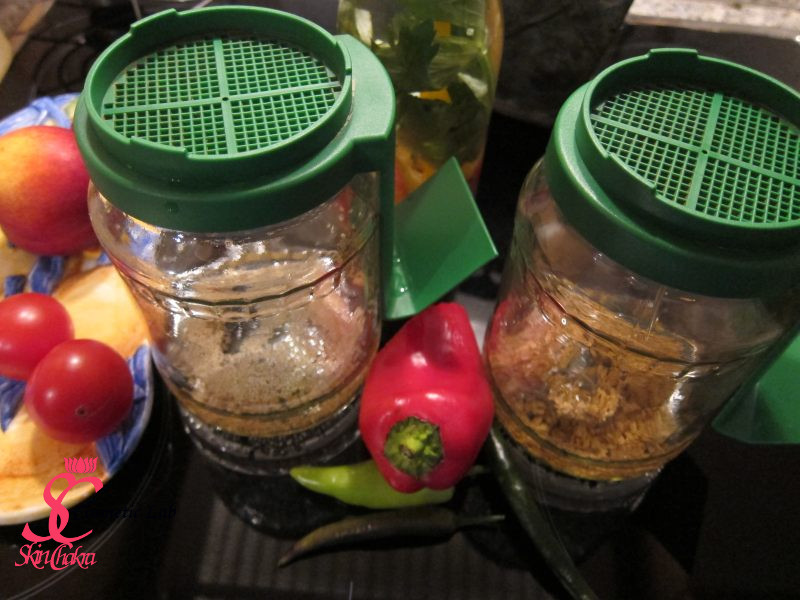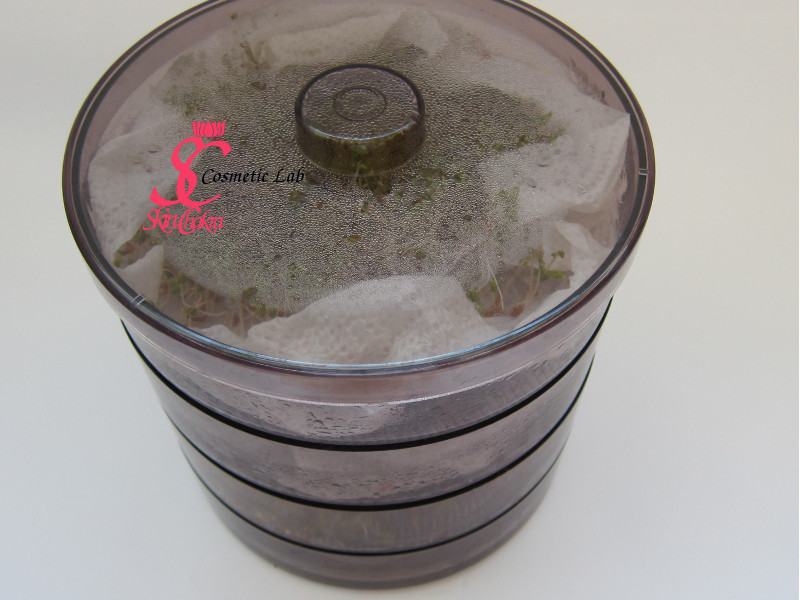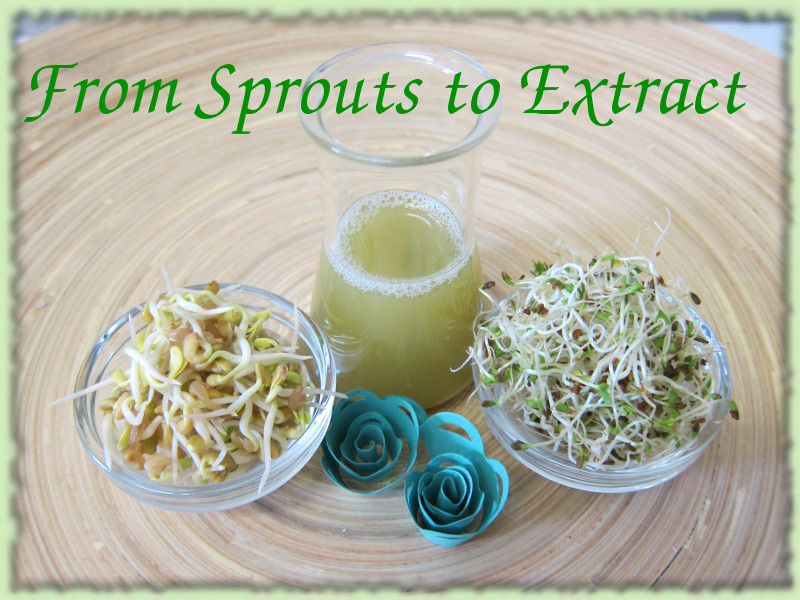
Sonntag, 18. September 2016
From Sprout to Extract: why extracting sprouts (part I)
Certainly one of the biggest pleasures of being a natural formulator is playing with all those amazing hydrosols and botanical extracts. The pleasure is even deeper when you make your own extracts, infusions and hydrosols.
During the last couple of months I was involved in an odyssey of sourcing some specialty extracts and as a result I became more convinced to make my own extracts as much as it is possible. (I'll come to it in a separate blog post)
Read our previous post about 7 good reasons to make your own extracts
You've certainly some experience with making your own infusions, macerated oils and probably even glycerites but have you ever tried your hands on making sprout extracts?
Sprouts are not only a big hit in nutrition and dietary supplements, they are becoming more and more popular in skin and hair care.
The reason?
The same as in nutrition: the quantity, quality and bioavailability of nutrients (minerals, anti-oxidants, vitamins, proteins etc.) are much more superior in sporuts compared to grains
Before we enter the practical part of sprouting and extracting, I just want to share with you some recent research studies about the nutrients in sprouts and the difference to the intact grain.
Resveratrol synthesis in enhanced in germinated peanuts compared to intact peanuts
Peanut sprout extract performs antioxidant and skin whitening properties
Total antioxidant capacity of beans are increased in the sprouts compared to the non-sprouted bean
Improvement of hypoglycaemic effect in fenugreek sprouts
How to:
You can practically sprout every thing from nuts, seeds, grains, kernels as long as they are not treated or sterilized: chick peas, green peas, lentils, alfalfa, fenu greek, wheat, broccoli seeds, watercress are just a few examples.
I'm not going into details of sprouting. This website provides you with excellent information and tutorials about sprouting if you don't know how to sprout or have any doubt about the details.
You can basically use mason jars, ordinary bowls and trays for sprouting different material. I find these sprouting glasses extremely handy dandy and useful for sprouting non-mucillage forming seeds and nuts such as alfalfa, lentils, fenugreek, amaranth etc.
And these towers useful for sprouting mucillage making seeds such as watercress or rucola seeds.
This is just my personal preference and I chose these per experience but you don't necessarily need them for making your first sprouts, go ahead with a simple mason jar or even a bowl.
Different seeds have variable sprouting period. Alfalfa sprouts for example shoot very fast, the sprouts are ready in 2-3 days where as spelt or chickpea need longer but anyway the whole process takes less than one week.
You need to soak the seeds, grains or nuts before starting sprouting. This varies as well depending on the material you're going to sprout. Seeds usually need some 8-12 hours where as nuts and beand need longer (up to 24 hours). Mucillage making seeds (such as watercress should not be soaked at all)
You need moderate temperature 15-25 degrees centigrade and medium to low light. Some advise storing the sprouting glass in a dark cabinet, I've never did this. My glasses and towers are on the kitchen counter or in the lab where no direct sunlight burns them but there is enough light (day time of course).
After soaking period, the seeds, nuts etc. should be rinsed twice a day with cold water. If your tap water is potable, you can use it for rinsing if you're in an area with low quality tap water then use mineral water or filetred water.
After harvesting sprouts and rinsing them several times with filtered water, I usually extract them fresh. When the work load is too high and I know we can not manage a rapid extraction and filtration, we dry the sprouts by 40 degrees centigrade to avoid any contamination and degradation and then extract the dried sprouts (this is actually a better option because you'll have much less water in the extract)
If you feel tempted enough to start playing with sprouts come back again for the part II in a couple of weeks.
Meanwhile don't hesitate to send us your comments and questions per Facebook or mail or follow our Instagram feed for photos of our sprouts and extracts.
More interesting links:
